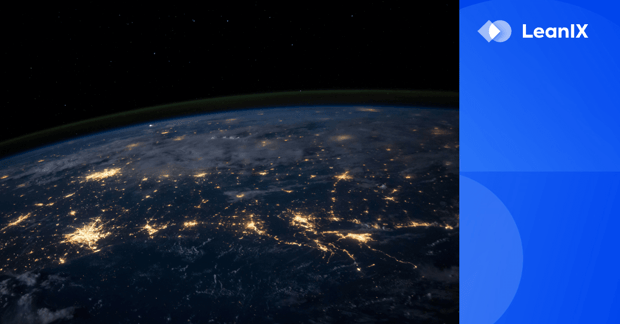
AI has simultaneously been hailed as a way to cut your organization's carbon footprint and denounced as environmentally damaging. What's the truth of AI and how can you balance its innovation with sustainability?
Artificial intelligence (AI) has been a revolution for enterprise, with a myriad of valuable use cases for the technology coming to light. Among these is the potential for AI to increase efficiency and cut down on the environmental impact of your tech stack.
By monitoring significantly more data than human beings can fathom, using algorithms to make accurate predictions about future emissions, and dynamically adapting your organization in real time to optimize your sustainability, AI can cut your carbon footprint dramatically. Yet, the super-computing power of AI requires a tremendous amount of energy to run, meaning the carbon footprint of AI servers themselves is extreme.
This leaves enterprise in the awkward position of using a source of carbon fecundity to reduce its own carbon footprint. Essentially, shifting the blame for carbon production without reducing it at all.
The key here is to understand everywhere AI is being utilized in your IT landscape and the sustainability ramifications of leveraging it. To find out more about how the LeanIX platform can map the sustainability of all your applications, download our co-authored whitepaper with PwC:
USE CASE: IT Sustainability
The Case For AI For Sustainability
Boston Consulting Group (BCG) analysts believe that the use of artificial intelligence (AI) can cut global carbon emissions by 5-10%, while also saving enterprise USD 1-3 trillion in sustainability budget. It's easy to make these claims, but BCG isn't an organization prone to hyperbole.
BCG recommends:
- using AI-powered data engineering to automatically track emissions
- utilizing predictive AI to forecast future emissions across a company’s carbon footprint
- leveraging AI insight into every aspect of the value chain, production, and transportation
Your organization's carbon use is far too complex for a human to fully comprehend, but an AI can understand your entire estate and pass on clarity about your emissions. It can then use algorithms to accurately predict your energy needs in the future.
Lastly, AI can control your energy usage and carbon emissions across your estate in real-time as it happens. This means that you can constantly optimize your energy use and minimize your carbon footprint in a way humans never could.
AI can essentially turn your business into a thinking organism that can manage its own operations while you focus on your work. This includes your company dealing with its own carbon footprint automatically.
If every company and organization did this, then this could lead to a tremendous reduction in carbon emissions across the entire world. With just 100 companies producing more than 70% of the world’s carbon since 1988, this could be the key to stopping climate change.
From an individual standpoint, optimizing your carbon footprint using AI will satisfy the regulators and dramatically improve your reputation. At the same time, it will reduce your workload, increase your operational efficiency and, therefore, improve your bottom line.
The Case Against AI For Sustainability
A web search leveraging leading generative artificial intelligence (AI) platform, ChatGPT uses four to five times the amount of energy that a traditional search uses. Overall, running ChatGPT is already consuming the same amount of energy as 33,000 homes.
Further, in Iowa, USA, one of ChatGPT's data centers is currently consuming 6% of the local district's water to cool processors and generate electricity. Meanwhile, globally, AI initiatives will soon require the same amount of fresh water as half of the United Kingdom.
As the technology develops and the number of users grows, the amount of resources that AI drains will only increase. This essentially means we're trading the excess carbon produced by enterprise for a potentially greater centralized source of carbon.
Yet, this isn't the way it has to be. French think tank, Big Science, created the BLOOM large language model (LLM), which has similar capabilities to ChatGPT, but with a much smaller carbon footprint.
It's possible to leverage the power of AI innovation to optimize sustainability without doing further damage to the environment. The key to this is to understand the impact your AI is having on the world around you.
Leveraging The LeanIX ESG Capability Map
To gain understanding of where your artificial intelligence (AI) tools are benefitting the environment and where they may be doing more harm than good, you need a complete viewpoint of your entire AI landscape and its environmental impact.
LeanIX worked with PwC to develop environmental, social, and governance (ESG) capabilities within our Application Portfolio Management platform. This will allow you to build an ESG Fact Sheet on each of your applications, including your AI tools.
With the information stored in your ESG Fact Sheets, you can generate an ESG Capability Map to strategize and visualize your initiatives, build an ESG road map, and track your progress towards sustainability. This allows you to track the performance of your AI tools against your sustainability targets.
To find out more about leveraging AI tools to drive sustainability without making the problem worse elsewhere, download our co-authored whitepaper with PwC:


